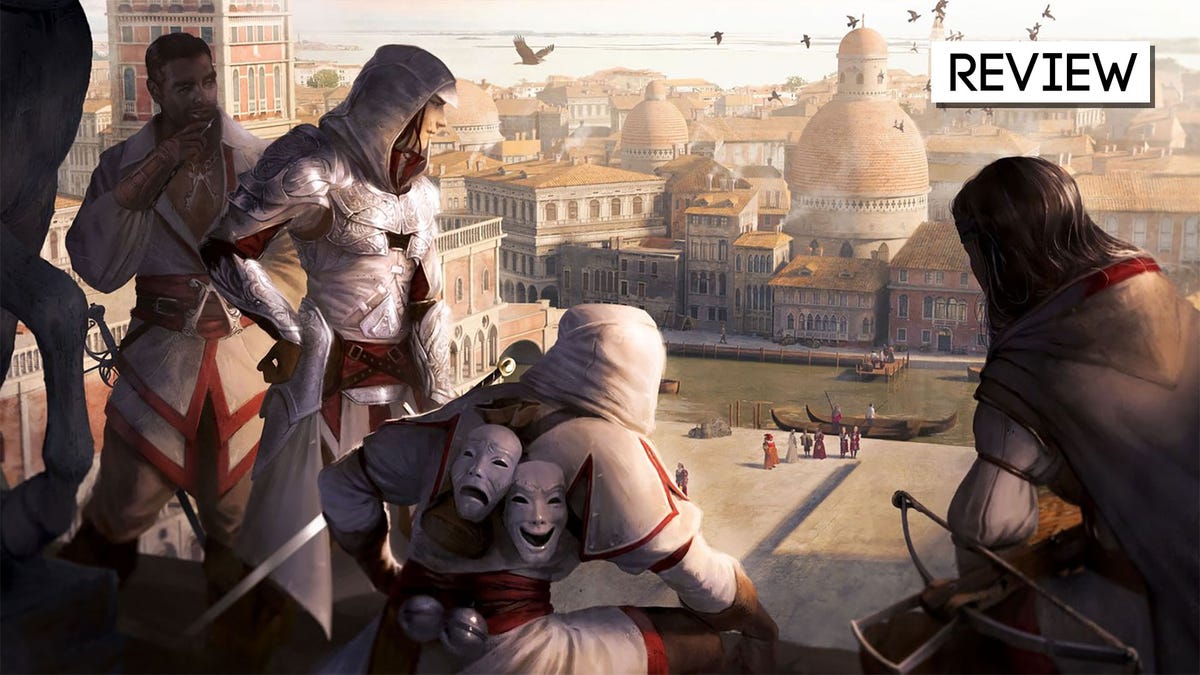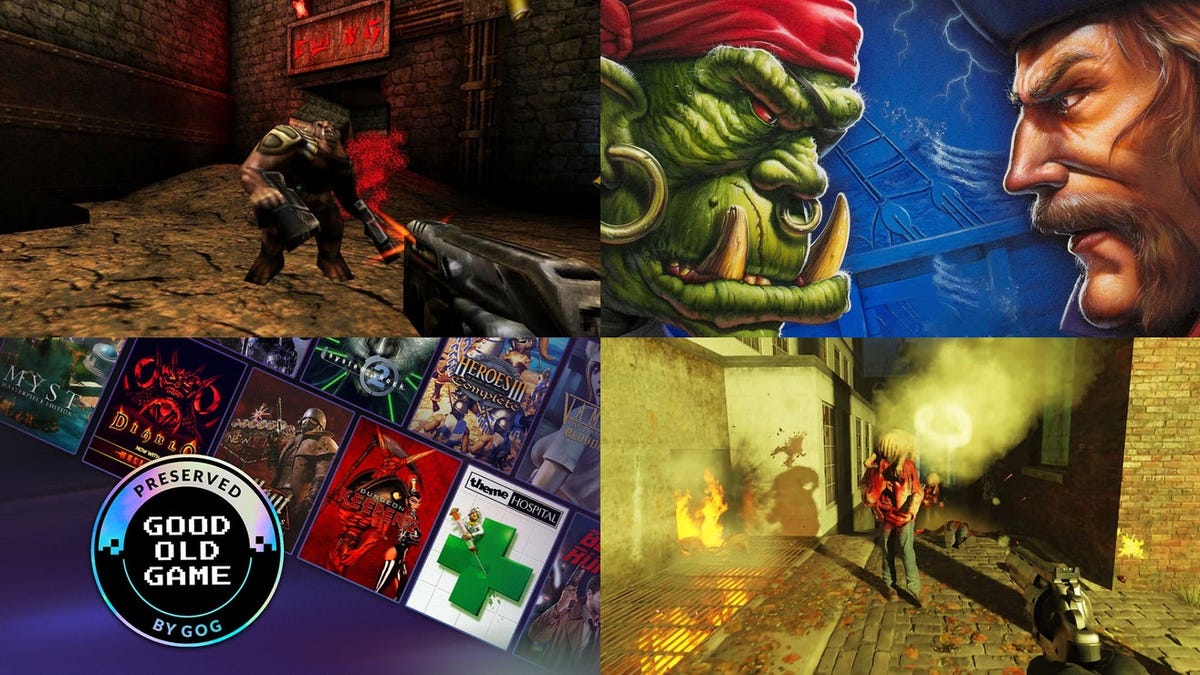One of my favorite board games of all time is V commands, a WWII co-op game that explores stealth and covert warfare. Now, years later, the team behind this game has taken everything they learned from 1945 and instead worked on something dating back to around 1459: Assassin’s Creed: Brotherhood of Venice.
This is not the first Assassin’s Creed Board game, but it’s for sure the biggest one, which I’ll get into in more detail later in this review. But right now this is a pretty promising fit: not only do creators Triton Noir have a pedigree of games about sneaking around, but the design team also has former Ubisoft developers on their ranks, one of whom is directly involved in the fiction of the Assassin’s Creed Universe.
After a long wait – the kickstarter of the game was already running in 2018 –Brotherhood of Venice is finally here, and it’s not your average board game adaptation. Like I said, the designers have Assassin’s Creed Experience while Ubisoft’s current Assassin’s Creed The writing team also helped with some of the content that manages to fit into the existing canon of the game in interesting ways.
Brotherhood of Venice comes in a huge box full of cards, stage tiles and a whole army of miniatures. The game is based on a long, narrative campaign where players open envelopes to discover mission objectives, create cards from modular tiles, and then play cooperatively to sneak / kill past guards and complete objectives. Each mission you play takes about an hour, and in between you can retreat to a headquarters – physically represented as a separate map piece with places to store items – where you can rest and take care of yourself. It’s a lot of administrative work, but it also helps keep the campaign missions and items a secret.
Is gameplay very similar to V commandsby having players walk first, take turns moving and performing actions. You do this in a way that is essential to teamwork – and one of the most satisfying parts of the game is when you can work together to get things done – by splitting those actions up. Let’s say if I have four actions this turn, I can do two of them to get into the same room as a guard, then a friend can jump into the room and kill that guard, then I can spend my last two points to hide me the body and put it back out of the room. Collaboration! You don’t have to do this, but playing with friends is definitely the coolest, most satisfying way to get the job done.

Once all of the assassins have moved, it is the enemy’s turn. Your opponents are controlled by a very simple AI system that has a compass direction printed on this round’s event card, and any guard that can move (many are bogged down by different jobs / conditions) will go that route if it be because, as the players have been spotted doing so, guards will instead be heading towards them.
The key to this whole idea of detection and movement is an alarm condition that goes off when you are spotted, which not only attracts guards but also affects the reinforcement step that takes place at the end of each round. If the alarm is silent you will have fewer bad guys, but if it goes off there will be a lot more to face. Ideally, you don’t want to trigger the alarm everBut then it’s also largely impossible to do that for an entire mission, as whether or not you get spotted is largely determined by the roll of the dice, so you have to assume that it will eventually go to hell and you’ll have to improvise (which often the case when your teamwork and coordination are the most fun).
I liked this system in V commands– it’s a lot more elegant than it sounds, mostly because you can see which direction the enemy is headed during your turn, and you can take that into account – but it’s even better here, maybe because it feels more appropriate. The mix of camouflage and open combat, the emphasis on hiding bodies, the need to find points to jump out of the shadows, the constant risk of an alarm going off, it all feels exactly like playing Assassin’s Creed, only now you have wingmen and everything goes much slower. As tabletop adaptations of video games, this is one of the really big ones.
Especially when you grow up Assassin’s Creed Nerd. In addition to playing like an Assassin’s Creed game Brotherhood of Venice feels like one and falls into the series’ labyrinthine lore almost immediately with a story that continues through each mission. There are a lot of characters fans will know, including Ezio himself, and the way the story unfolds as your characters level up and gain new skills and items really helps piece together a number of different and disjointed missions.
The thing is, when you try so hard to play just like the video games on the table, Brotherhood of Venice managed to let some of the bloating and boredom of the franchise creep in where this medium could and should have kept things leaner. Basically, I found this game too big. It’s literally too big, comes in a weirdly large box, and when rolled up, takes up an enormous amount of space on the table, with assassin playmats, a playing card or two, several decks of cards, some other large enemy mats, and a compass , a huge HQ token with its own cards, stacks of envelopes with the game’s missions … it’s an enormous task to set up this game and an even bigger one to put it away and organize things so you can play it again .
I have a pretty large dining table, but as you can see below, it didn’t matter Brotherhood of Venicethat keeps getting bigger and bigger, and greater. And the photo below is from a night when only two of us were playing!

But it is also too big in scope. There are over 20 missions to play as part of the campaign – loads more if you have the three expansions – and each takes about an hour or even longer if you’re playing with four assassins and a full cast, you’ll have to wait for each one a strategy is developed and it is your turn. Do the math, then work on how difficult it can be to get 3-4 people together in the same room and take forever
If this sounds like something you and your friends could handle, then great! Maybe you’re away for a weekend / week and you can just turn it on. Maybe you have a playroom or a dedicated space where you can have it set up and not have to worry about rebuilding it every time and then packing it away. Maybe you are just one Assassin’s Creed Obsessed who’s not really busy for the next few months and who thinks everything I just said is fine and acceptable to you in your current situation.

Everyone who ticks these boxes is in a good place to worship this game. And in most cases I do too! But even then, even though I wanted to, I just couldn’t finish this game. I have a video game website to work for 9-5, I play soccer, I have two kids, a pandemic is afoot and, perhaps most importantly in this context, I have board game friends who enjoy playing other board games, not the same thing for months. I understand this is my personal circumstance, but it is my review, and I think the scope of this game, combined with the effort of keeping everything properly archived and sorted, is worth considering.
What a damn shame! Because as for the game itself, I loved it. I love how smart and snappy it plays and how elegant the enemy system works, and since I haven’t mentioned it, I also liked the way that this game is just a joy. It’s easy to make fun of the amount of plastic miniatures used in licensed board games these days, however Brotherhood of Venice uses his guards, ladders, and chests [spoilers] with great effect. Almost everything you do in this game is represented by a game character or miniature, which adds a great sense of physicality to the game, while the card tiles and card art are rich and vibrant and blend seamlessly with what you get from the are used to video game series.
Unfortunately that was a bit too much for me, Which is pretty funny when you think about it, considering that “being great but asking too much of your players” is exactly the same problem that I think video games suffer from at the moment. At least here this equation is variable depending on your individual situation. So if you can get a campaign rolling and keep it going, this is a fantastic, if slower version of the Assassin’s Creed Experience.
(If you want to see in detail how the game works, this Dice Tower video is a great place to start!)
.








